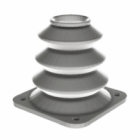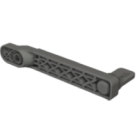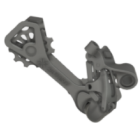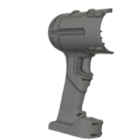Removing supports from 3D prints
Supports are essential for printing overhangs, bridges, and complex geometries — but once the print is finished, they have to come off. Removing supports from 3D prints is a delicate but crucial post-processing step that affects both the visual quality and functional integrity of your part. Done correctly, support removal ensures your model retains its detail and strength. Done poorly, it can lead to surface defects, breakage, or warping.
This section explains how to remove supports safely and efficiently, depending on the print technology and material used.
Understand the type of support materialu remove anything, it’s important to know wha
Before you remove anything, it’s important to know what kind of support you’re dealing with:
- breakaway supports (typical in FDM) – made of the same or similar material as the part, designed to snap off by hand or with pliers,
- soluble supports (FDM with dual extrusion) – dissolve in water (PVA) or a chemical solution (HIPS with limonene).
- resin supports (SLA/DLP) – brittle, often need to be snipped off with flush cutters.
- powder supports (SLS) – technically not supports, but unsintered powder acts as a natural scaffold and must be brushed or blasted away.
Knowing your material guides your removal method and helps avoid damaging the printed part.
Tools and techniques for support removal
The right tools make the difference between a clean finish and a surface scar. Some of the most common tools include:
- flush cutters or side snips,
- precision pliers or tweezers,
- deburring tools or hobby knives,
- brushes (for powder removal),
- ultrasonic cleaner (for dissolvable supports),
- warm water or solvent bath (when applicable).
When removing supports from FDM prints, start with large outer supports and work inward. Avoid twisting or bending them aggressively — it can break delicate features. For resin prints, support points are usually smaller but more brittle; it’s best to clip close to the base, then sand the remaining nubs.
| Support type | Used in | Removal method | Tools recommended |
|---|---|---|---|
| Breakaway (same material) | FDM, some SLA | Manually snap or clip off | Pliers, flush cutters, deburring tool |
| Soluble (PVA, HIPS) | Dual-extrusion FDM | Dissolve in water (PVA) or limonene (HIPS) | Water bath, ultrasonic cleaner, brush |
| Resin supports | SLA / DLP | Clip close to contact point, post-cure sanding | Flush cutters, sandpaper, tweezers |
| Powder supports | SLS / MJF | Not bonded — remove loose powder manually | Soft brush, air compressor, media blaster |
Tips for cleaner results
Here’s how to make the process smoother and safer:
- Let the print cool or cure fully before attempting removal. Warm or soft parts are more prone to damage.
- Use support interface layers in your slicer settings — they make breakaway supports detach more cleanly.
- Orient your part thoughtfully to reduce the number of supports in the first place.
- Work slowly and deliberately, especially around thin or detailed features.
With practice and the right preparation, support removal becomes a quick and confident part of your workflow — not a frustrating afterthought.
Explore also
- Sanding 3D prints
- Polish 3D printed
- Sandblasting 3D prints
- How to fill gaps in 3D prints
- Priming 3D prints
- How to paint 3D print
- How to foiling 3D prints
- How to metal plating 3D print
Related categories













